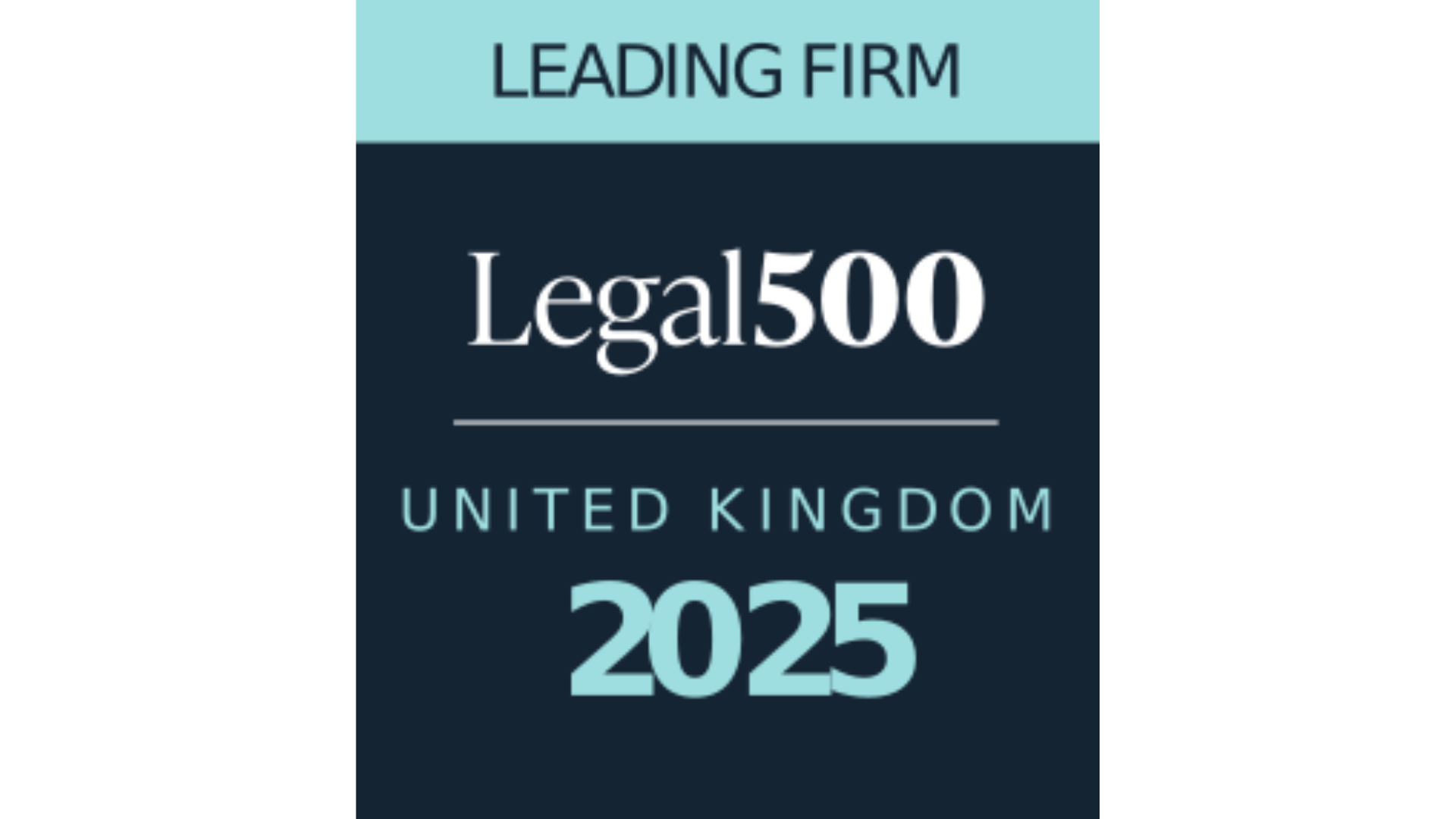News
The IP Lawyer’s Cheat Sheet: Lucy Johnson on Innovation, Legislation, and Strategy
November 2024
The world of intellectual property is on the brink of significant transformation. From navigating the use of AI technology to staying ahead of increasingly sophisticated bad actors, IP professionals must adapt their strategies and practices to continue to protect intellectual property in a fast-evolving landscape.
Lucy Johnson is a European and UK Patent Attorney currently serving as Chief Operating Officer of European IP firm HGF. Having been active in the IP space for nearly 25 years, Lucy has a wealth of experience in devising and delivering worldwide IP strategies across various industries. The Global IP Exchange was lucky enough to sit down with Lucy to discuss some of the most pressing topics in the intellectual property landscape.
Section 1: AI and IP: Innovations and Best Practices for Modern IP Departments
How do you see the role of AI in IP strategies evolving over the coming years?
This is a relatively easy one. AI is going to be an enabling technology and organizations will have access to great AI tools.
“Leveraging AI will give businesses an advantage if they learn to operate and implement it well.”
There’s so much choice in terms of AI functionality, and IP teams and professionals need to find out which options add value to the work they’re doing. AI will increasingly support things like workflow and data processing, but we need to remember that so much of what we do is human. You really need the right skills and implementation in order to make better decisions and simplify workflows using AI.
The headline on AI for me is about making really smart choices. IP professionals need to make sure that the AI solution fits the business and adds value both at the client and colleague level. Then it’s about using it to the best advantage to make data-driven decisions.
What strategies can IP professionals use to overcome resistance to change when overhauling internal systems that have been used for a long time?
Change can be invigorating for some, but it can also be really unsettling. The key to successfully implementing change is to have a clear reason for it, alongside frequent and clear communication both around the reasoning behind the change and the outcomes to be achieved.
Resistance to change can come from different places, but communication, purpose, clarity of roles and responsibilities, objectives, and honesty are the best strategies for overcoming resistance to change. That is what’s going to make sure that people are brought along on the journey.
What advice do you have for IP professionals to navigate the increased use of AI, both within IP departments and the wider business?
Treat AI like any other tool in the business. Ensure you’ve got a clear policy and turn that policy into procedures. Teach people about the policy, the tools, and how to implement them safely in the business. Know where the risks are for the business, your team, and your clients, and know how to mitigate those risks. A lot of that risk mitigation comes from people understanding what the AI tool is and how it can be used safely.
What strategies can IP professionals use to achieve buy-in and investment from senior management for AI and other IP technologies?
Gaining buy-in goes back to clarity of purpose and goals. Make sure you can communicate what the tech is for, what it isn’t, and how it can support the objectives of the business. Also know what alternatives are out there. Make sure you know why you are bringing this particular solution rather than something else. It’s all about that clarity of communication.
“When you’re looking at senior management, the questions they’re going to ask are: What is the purpose? What is the value? What is the return on investment? What is the risk? As soon as you’ve made this clear, decisions become much easier.”
Section 2: Navigating Foreign Jurisdictions and Staying up to Date with Changing Legislation
Which recent or upcoming legislation do you think will have the biggest impact on the way IP professionals approach their IP strategy?
I can’t sit in Europe and not mention the unitary patent and the Unified Patent Court (UPC). Obviously, that is an emergent area of law that is moving and evolving quite quickly. As IP professionals, we’re going to need to keep an eye on how people utilize the unitary patent and the UPC and what kind of laws and decisions come out of that as it evolves. Will it change how people use the existing European patent systems that sit alongside it? It’s going to be really interesting to see how the court and the law from that court evolves.
Another interesting area is trade secrets and the various legislations around the globe. This is something that IP professionals need to understand to be able to manage and protect trade secrets on behalf of their businesses.
“As people move between businesses, they take with them vast swathes of knowledge, trade secrets, and information. How do you manage that knowledge as people move around?”
It’s going to be quite interesting to see how laws relating to trade secrets evolve, but also how practice evolves to deal with the movement of more and more people through professions.
Do you have any advice for IP professionals to stay up to date with changing regulation both at home and in foreign jurisdictions?
How could I not mention IQPC’s Global IP Exchanges in the US and Europe? I’ve chaired these conferences for many years and it’s a great forum for IP professionals to come together, share their expertise, experiences, and challenges. Conferences, global forums and networks, and the general and IP trade press are all great ways for IP professionals to stay up to date.
Section 3: Dealing with Patent Trolls and Bad Actors
How have you seen the actions of patent trolls and other bad actors evolve in recent years?
I’m going to come back to the use of AI. AI technology has really broadened the reach of bad actors. The pattern of filing in multiple jurisdictions at the same time makes it really difficult to defend against bad actors – it’s more challenging and costly and there’s more information that IP professionals need to be abreast of, particularly within the industry itself. Technology and the multi-jurisdiction approach has really been the most significant evolution in this area over the past few years.
“It’s really about using technology to combat technology.”
Do you have any advice for IP professionals to get ahead of bad actors and trademark trolls to protect their inventions?
This is partly about technology, but what we’ve seen work well with trademarks is strong monitoring, preventative measures, and working with customs authorities and with brand protection. The last few Global IP Exchanges have provided some strong advice and expertise around the partnership between industry professionals and brand protection partners externally. This is a really fast-moving area, and keeping ahead of it is quite difficult. So, make sure you’re talking to other people and sharing experience by engaging with industry associations and networks, gathering intelligence, learning about best practice, and anticipating what’s coming over the horizon.
Do you think wider systemic change is needed to combat this issue?
This is a really difficult question to answer with any great authority given the breadth of the challenge.
“The landscape is evolving legally and the ingenuity of the bad actors is allowing them to move very quickly. The key to combating this issue is to be able to respond at pace and with confidence.”
Being persistent and having a systematic approach is what really works with bad actors. Some of the challenges are specific to certain industries, so having expertise and experience to bring to bear on those challenges is really crucial. Strong partnerships and learning from the people alongside you who are dealing with similar challenges, perhaps in adjacent industries, is really important here.
Section 4: Integrating IP: Enhancing Communication and Collaboration Across Departments
Why is it so important to improve communication between IP teams and other departments?
Really this is about a bilateral understanding of value and where IP sits within the context of a business. IP teams need to understand their business in terms of what is happening, where the challenges are, and what’s on the horizon for the business. An IP portfolio can become redundant and irrelevant very quickly if it doesn’t stay abreast of what’s happening in the business and where the key business changes are coming from.
The best analogy for this is to compare it to when analogue radio became digital. If you had a portfolio of IP that protected just analogue technology when this change happened, you were out of date already. It’s really important to get to know your business as an IP professional so you can anticipate when those changes are going to happen and what the key milestones of the business are. And it works both ways – businesses have to talk to their IP people to make sure that what they’re doing today is going to be relevant tomorrow.
What strategies can IP professionals adopt to raise the profile of IP within organizations and improve relationships with other departments?
The key thing to consider here is ‘What’s in it for me?’ People respond when they see why things are important for them. One way this can be achieved is by incentivizing IP creation and collaboration. It is also useful to make it easy for people to understand and engage with IP by sharing knowledge from the IP landscape in a way that’s meaningful for both the team and the individual.
“Start with ‘What’s in it for me?’ Communicate IP in the context of why that individual should care. This can really get people involved and engaged with why IP is created in the business.”
Section 5: Looking Ahead: Future Trends and the Strategic Value of IP
What do you believe is the value of IP for society and for innovation?
Quite simply, IP continues to protect those who push the boundaries of technology. In addition, IP systems need to continue to encourage innovation and investment in R&D. If we do those two things well, IP will continue to be valuable.
How has the perception of IP changed over the years?
Perceptions have definitely changed a lot. IP is now more widely understood and has become more mainstream since I started my IP journey in 2000. The commercial awareness of the value of IP amongst business leaders has definitely increased. Media coverage of IP disputes has also helped increase awareness. By seeing artists like Ed Sheeran or companies like Apple in the mainstream media talking about IP disputes, people have started to get it. IP starts to become more relevant to individuals in their daily lives. That has changed a huge amount since I started this journey 25 years ago.
Why do you believe gatherings like the Global IP Exchanges are vital for the IP community?
Ironically, with the surge in technology and AI implementation and usage, the human factor will become much more important in our relationships and in understanding why we do things. The Global IP Exchange is a community of IP professionals coming together to share knowledge, challenges, experience, and expertise. We do better when we collaborate, and the Exchange gives us the environment to do that.
This interview was created in collaboration with the Global IP Exchange event series. For more information, visit the websites below:
Global IP Exchange USA: Global IP USA Exchange
Global IP Exchange Europe: Global IP Europe Exchange






























